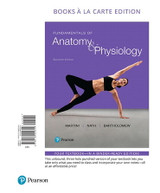Anatomy & Physiology for Emergency Care, 3rd Edition
For courses in paramedics - Learning A&P in the context of its emergency care applications
With Anatomy & Physiology for Emergency Care, Dr. Bledsoe builds upon the popular Essentials of Anatomy and Physiology, by Frederic H. Martini and Edwin F. Bartholomew. The result is a text that provides the necessary A&P instruction to study prehospital emergency care while adding in the clinical correlations and applications of emergency care. Students gain a framework for interpreting and applying information, as well as a basic understanding of common injuries and illnesses. The 3rd edition has been extensively revised and updated with numerous new clinical discussions and dozens of new figures, art, and photographs. Notably, the clinical correlation material now appears next to the topic being discussed.
Strategic presentation of core concepts
- Conceptual overviews examine “big picture” relationships between anatomical structures and their function.
- Key notes throughout chapters call out core concepts in both A&P and EMS. The complete set of Key Notes also appears in Appendix V.
- Expanded - Clinical notes focus on core medical topics or explain how pathologies relate to normal physiological function. New clinical notes in this edition cover imaging techniques, dermatitis, burns, types of fractures and steps in repair, osteoporosis, diabetes mellitus, and endocrine disorders.
- Revised - Updated clinical discussions linking A&P and emergency care cover topics such as homeostasis and disease, the mechanisms of injury, soft-tissue injuries, pain management, and emergency blood transfusion.
Learning aids
- Expanded - Anatomical art places illustrations alongside photographs of the anatomical structure to clarify the location of the structure and what students can expect to see in laboratory or clinical settings. Dozens of new figures, illustrations, and photographs have been added.
- Stepby-step diagrams coordinate with the narrative to break down complex processes into easy-o-ollow steps.
- Updated - Related clinical terms at the end of each chapter present the most current vocabulary of A&P. Each term is followed by a definition and, in many cases, a pronunciation guide.
- Updated - Changes to the appendices include an updated overview of the House of Medicine (Appendix 1) and updated nomenclature changes to help avoid medication errors (Appendix 3).
Critical thinking and review
- Critical thinking and clinical applications questions, located at the end of each chapter, challenge students to apply new knowledge to hypothetical clinical situations related to the body system covered in the chapter.
- Concept Check questions appear at the end of chapter sections so students can test their comprehension before moving on to the next topic.
- New - Build Your Knowledge feature examines how select body systems integrate with others discussed in previous sections of the text. This edition examines the integumentary, skeletal, muscular, nervous, endocrine, cardiovascular, lymphatic, respiratory, digestive, urinary, and reproductive systems.
- Concept links feature provides quick visual signals that the new material students are reading relates back to topics presented earlier, and lists the page number where the previous references can be found.
New to This Edition
Strategic presentation of core concepts
- Clinical notes focus on core medical topics or explain how pathologies relate to normal physiological function. New clinical notes in this edition cover imaging techniques, dermatitis, burns, types of fractures and steps in repair, osteoporosis, diabetes mellitus, and endocrine disorders.
- Updated clinical discussions linking A&P and emergency care cover topics such as homeostasis and disease, the mechanisms of injury, soft-tissue injuries, pain management, and emergency blood transfusion.
Learning aids
- Anatomical art places illustrations alongside photographs of the anatomical structure to clarify the location of the structure and what students can expect to see in the laboratory or clinical settings. Dozens of new figures, illustrations, and photographs have been added.
- Related clinical terms at the end of each chapter present the most current vocabulary of A&P. Each term is followed by a definition and, in many cases, a pronunciation guide.
- Changes to the appendices include an updated overview of the House of Medicine (Appendix 1) and updated nomenclature changes to help avoid medication errors (Appendix 3).
Critical thinking and review
- Build Your Knowledge feature examines how to select body systems to integrate with others discussed in previous sections of the text. This edition examines the integumentary, skeletal, muscular, nervous, endocrine, cardiovascular, lymphatic, respiratory, digestive, urinary, and reproductive systems.
©2020













